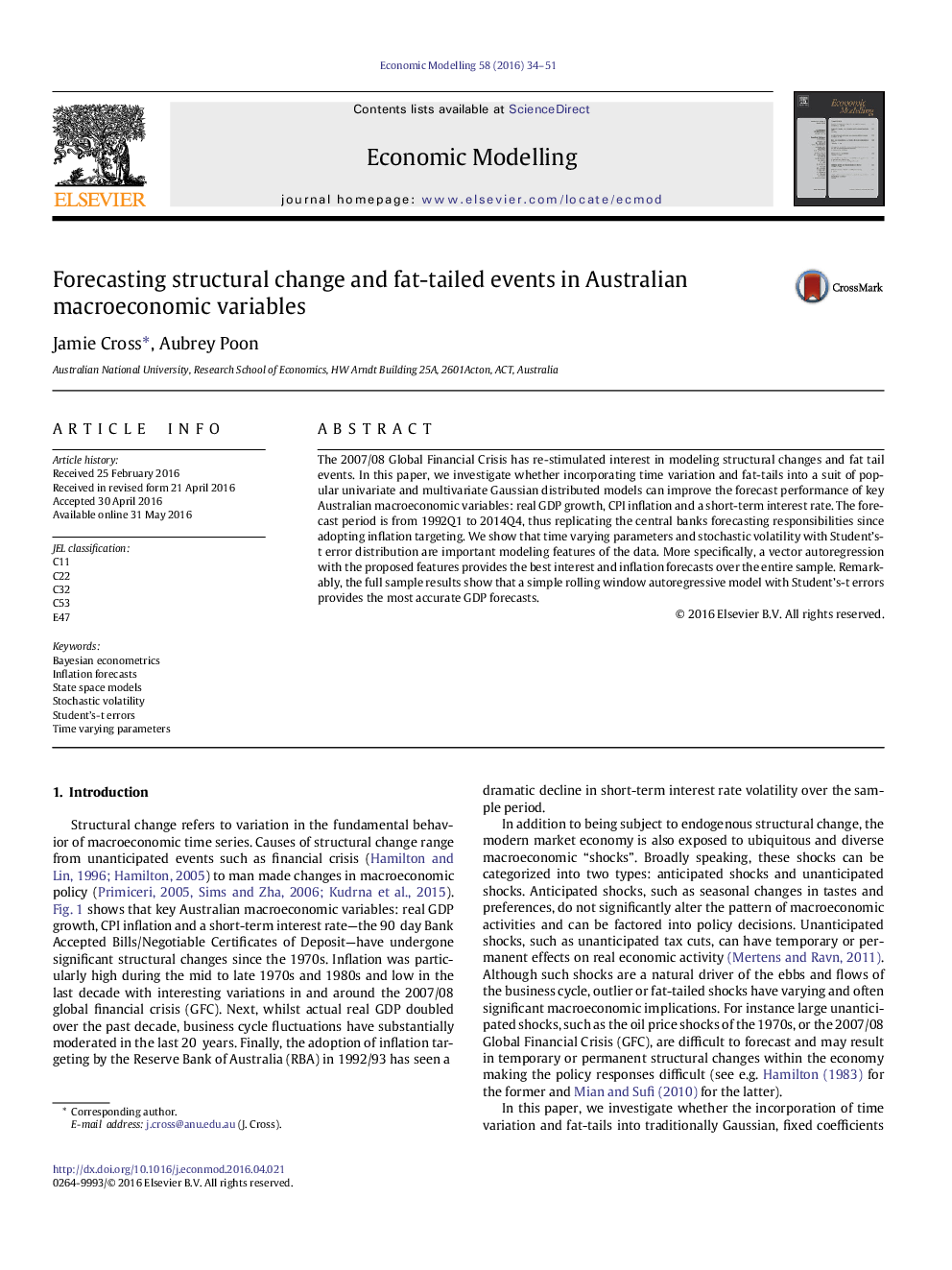| Article ID | Journal | Published Year | Pages | File Type |
|---|---|---|---|---|
| 5053460 | Economic Modelling | 2016 | 18 Pages |
â¢We investigate whether incorporating time variation and fat-tails into a suit of popular univariate and multivariate Gaussian distributed models can improve the forecast performance of key Australian macroeconomic variables: real GDP growth, CPI inflation and a short-term interest rate.â¢Time varying parameters and stochastic volatility with Student's-t error distribution are important modelling features of the data.â¢A VAR with the proposed features provides the best interest and inflation forecasts.â¢Remarkably, a simple rolling window AR with Student's-t errors provides the most accurate GDP forecasts.
The 2007/08 Global Financial Crisis has re-stimulated interest in modeling structural changes and fat tail events. In this paper, we investigate whether incorporating time variation and fat-tails into a suit of popular univariate and multivariate Gaussian distributed models can improve the forecast performance of key Australian macroeconomic variables: real GDP growth, CPI inflation and a short-term interest rate. The forecast period is from 1992Q1 to 2014Q4, thus replicating the central banks forecasting responsibilities since adopting inflation targeting. We show that time varying parameters and stochastic volatility with Student's-t error distribution are important modeling features of the data. More specifically, a vector autoregression with the proposed features provides the best interest and inflation forecasts over the entire sample. Remarkably, the full sample results show that a simple rolling window autoregressive model with Student's-t errors provides the most accurate GDP forecasts.
